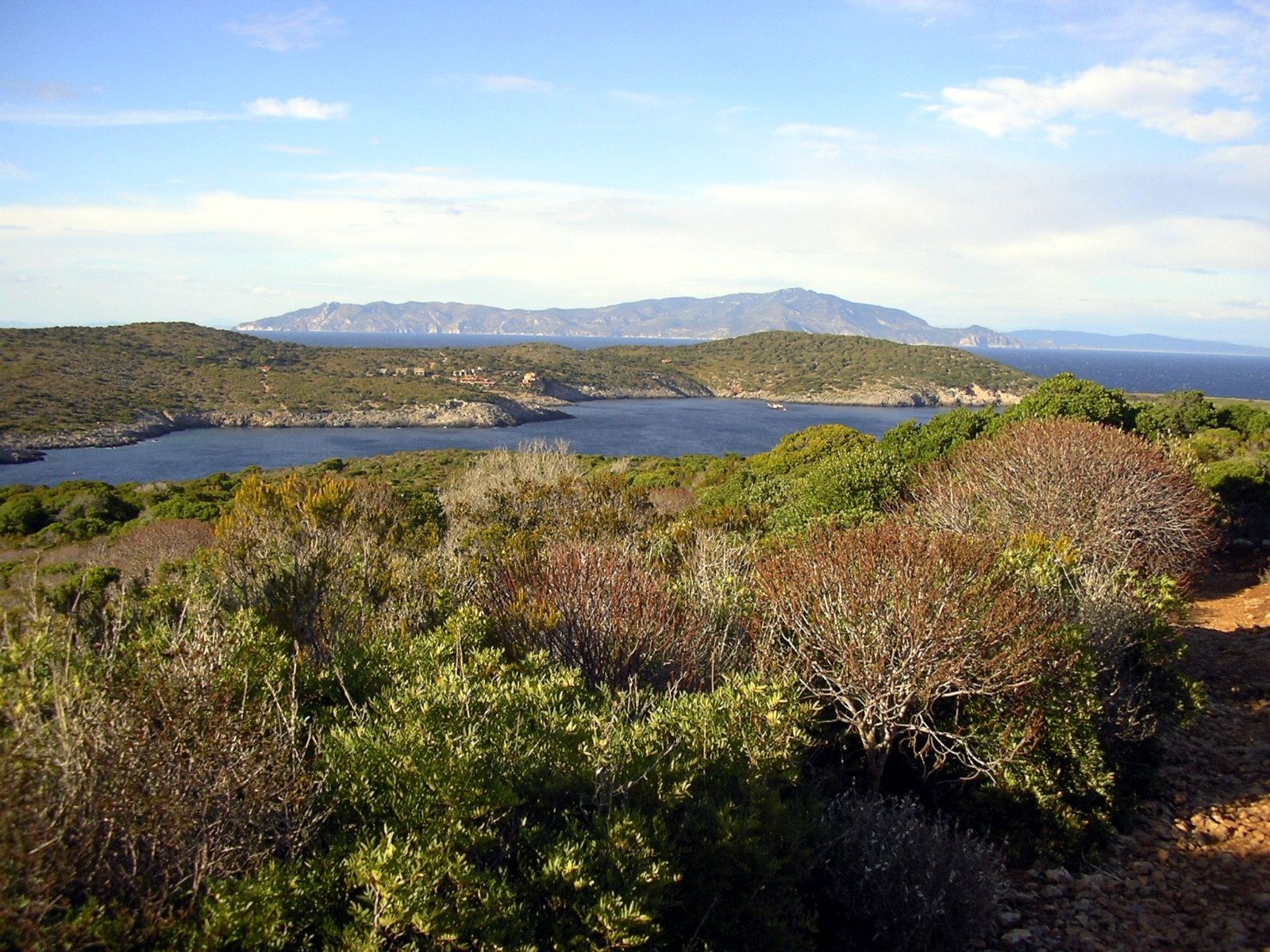Giannutri is the southernmost island of the Tuscan Archipelago, as well as the southernmost point of the Tuscany Region, and is located about 14 kilometers south-east of the Island of Giglio, whose municipality part, and about 12 kilometers south of the Argentario.
The inhabited center of Giannutri and the scattered houses, considered a minor locality, is institutionally called Spalmatoio-Ischiaiola (50 m a.s.l., 27 inhabitants).
Giannutri is a calcareous island, largely covered by various stages of degradation of the holm oak forests (present in residual areas), with a prevalence of Mediterranean scrub, coastal juniper, garrigue and annual meadows. Other relevant environmental typologies are rocky coasts, built-up areas and gardens, reforestation of conifers.
It is characterized by a jagged and rocky coast, interrupted by suggestive coves and numerous caves.
There are two landing places on the island: Cala Spalmatoio, to the south-east and Cala Maestra, to the north-west.
The Gulf of Spalmatoio is the portion of sea between Punta San Francesco, Punta Scaletta, Cala Volo di Notte and Cala dello Spalmatoio from which the gulf takes its name.
There are only five heights: Poggio di Capel Rosso (the highest point of the island), Poggio del Cannone (or Poggio di S. Francesco), Monte Mario, Poggio dei Gabbiani and Monte Adami.
Giannutri has been inhabited since the Romans in the Republican era and saw its maximum splendor there.
The name of the island refers to its particular half-moon shape and consequently to the crescent moon, an attribute of the goddess Artemis or Diana.
The island is a very important staging area during migrations. There are rare bird species nesting in the sea or associated with rocky habitats and garrigue.
There are some thermoxerophilous vegetation aspects that are now rare in the Mediterranean area. Floristically interesting is the phytohalophilous vegetation of Chrithmolimonietum sommieriani with the presence of endemic Tyrrhenian species such as Limonium sommierianum and Helichrysum litoreum. To these is added the Timelea tricocca, a species present in Tuscany only in three stations. Floristic populations of the rocky coasts with endemic species or those of high conservation interest have been detected.
Monuments and places of interest
Near Cala Maestra are the remains of a Roman villa from the 2nd century AD, built by the Domitii Enobarbi, an ancient senatorial family of important traders which included Gneo Domizio, husband of Agrippina, mother of the emperor Nero. Despite the artistic and historical relevance of the remains, until 2004 the villa was in private hands, to Count Gualtiero Adami (known as Il Garibaldino), then auctioned and saved by the Region and the Ministry of the Environment who exercised the right to preemption. Currently closed for restoration, despite the weather and the vandals are ruining it. There are also the remains of a Roman landing place.
At the southern end of the island stands the Lighthouse of Giannutri, dating back to the second half of the 19th century.
The island has considerable interest for diving, thanks to the vertical walls rich in gorgonians, sponges, corals and tunicates. Today most of the seabeds have been indicated as a type “1” protected area (in which motorized, sailing and rowing navigation, fishing, diving and bathing are prohibited) and therefore, on the one hand, the fish restocking, on the other hand made it difficult to find good diving spots. However, the extensive Posidonia meadows and the two wrecks of the Anna Bianca (at a depth of 40-50 meters) and the Nasim (at a depth of 60 meters) can still be found free for diving.



